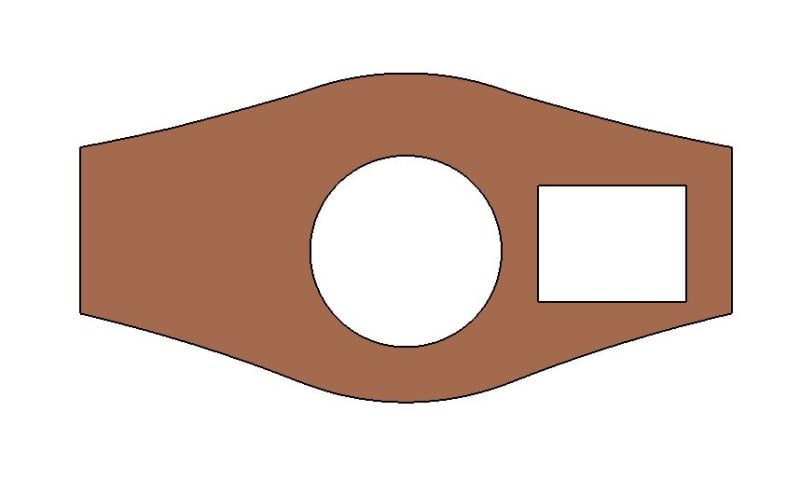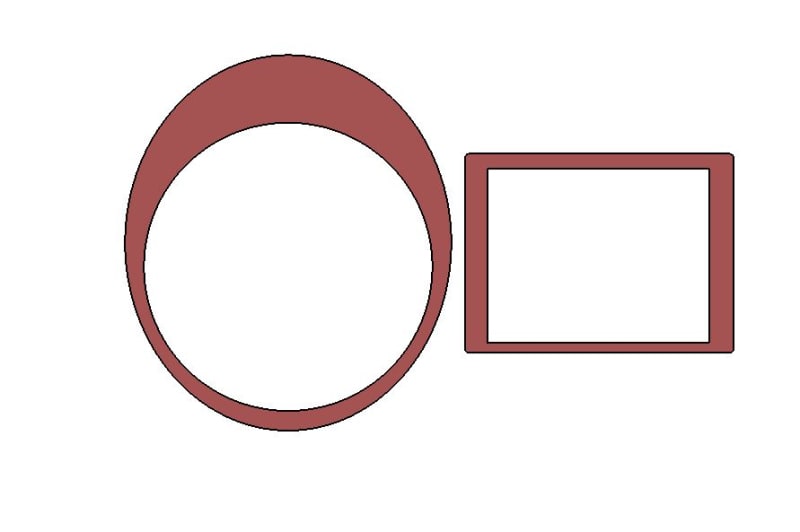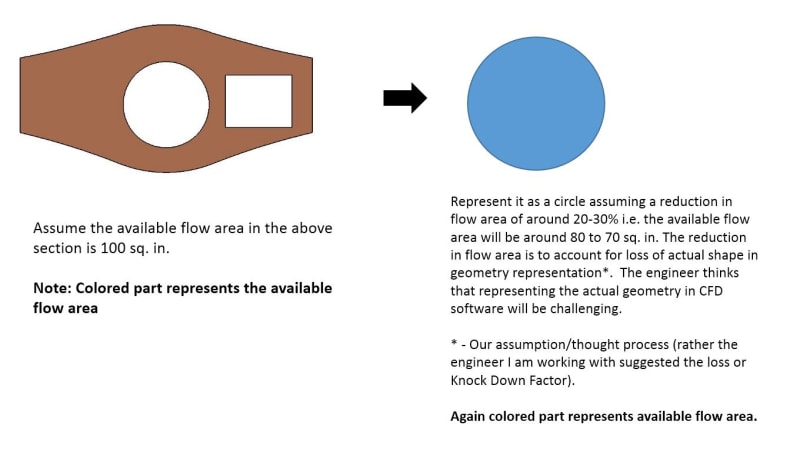Hi Folks,
I am looking for some pointers on where to start my research. I am not a CFD/Aerodynamics Engineer. Currenltly providing Design/CAD support under the guidance of Aerodynamics Engineers.
I have extracted several sections along the X-axis of a system. The sections are essentially closed contours which form areas (gaps such as cutouts etc.) where the air could flow. In other words, the area formed by these closed contours represent flow areas. The issue is that the transition in section shape is very abrupt along adjacent sections and the engineer I am working under feels that resulting surface loft (3D Surface Tube) could be too complex to be meshed within a CFD software. Instead, he suggested an idea. What if we replace the existing sections by equivalent circles. We will lost some fidelity by not including the actual shape of various sections but that could be offset by assuming some initial losses (say around 20%) in flow area. Just to give an example, if the flow area in one of the section is let's say around 100 sq. in, we could represent that section by an equivalent circle of having area of 80 sq in (assuming an initial loss of 20% in area due to not being able to capture the exact shape).
Is there any open source literature where such a task like above has been attempted? I've been asked to look around/search for the above, but tried the usual Googling with not much luck. Would appreciate any kind of pointers/support from experienced CFD/Aerodynamics folks about the above. The engineer I am working under feels more confident about the approach if we have some kind a base (such as an existing paper or guidelines) to support the above approach.
I am looking for some pointers on where to start my research. I am not a CFD/Aerodynamics Engineer. Currenltly providing Design/CAD support under the guidance of Aerodynamics Engineers.
I have extracted several sections along the X-axis of a system. The sections are essentially closed contours which form areas (gaps such as cutouts etc.) where the air could flow. In other words, the area formed by these closed contours represent flow areas. The issue is that the transition in section shape is very abrupt along adjacent sections and the engineer I am working under feels that resulting surface loft (3D Surface Tube) could be too complex to be meshed within a CFD software. Instead, he suggested an idea. What if we replace the existing sections by equivalent circles. We will lost some fidelity by not including the actual shape of various sections but that could be offset by assuming some initial losses (say around 20%) in flow area. Just to give an example, if the flow area in one of the section is let's say around 100 sq. in, we could represent that section by an equivalent circle of having area of 80 sq in (assuming an initial loss of 20% in area due to not being able to capture the exact shape).
Is there any open source literature where such a task like above has been attempted? I've been asked to look around/search for the above, but tried the usual Googling with not much luck. Would appreciate any kind of pointers/support from experienced CFD/Aerodynamics folks about the above. The engineer I am working under feels more confident about the approach if we have some kind a base (such as an existing paper or guidelines) to support the above approach.




